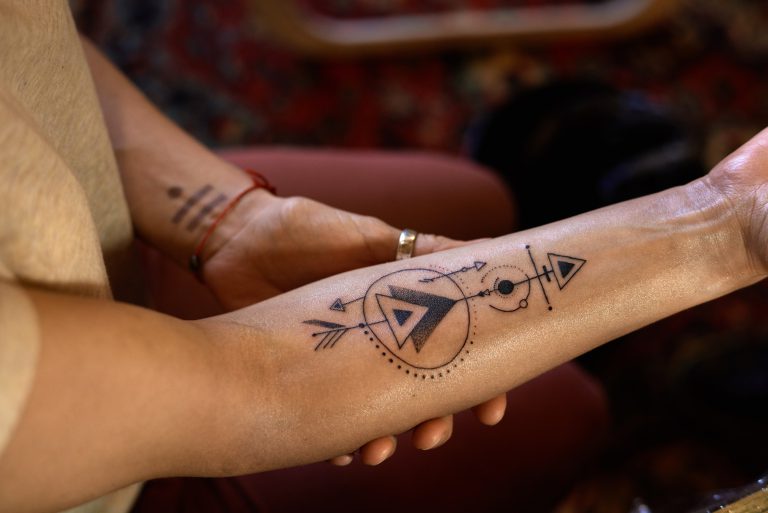Did you know that nearly 30% of people regret getting a tattoo? If you find yourself in this situation, fret not. Today, we delve into the world of the best tattoo removal processes. From advanced laser technology to innovative fading creams, we explore effective methods to bid farewell to unwanted ink. Whether it’s a change in taste or a desire for a clean canvas, these procedures offer hope for those seeking a fresh start. Say goodbye to tattoo remorse and hello to a blank slate with these top-notch removal techniques.
Key Takeaways
- Consider Laser Removal: Opt for laser tattoo removal as it is one of the most effective and popular methods available.
- Prepare Adequately: Before undergoing laser removal, ensure you follow the recommended pre-treatment steps to maximize effectiveness and minimize risks.
- Understand the Risks: Be aware of the potential risks and considerations associated with laser tattoo removal, such as skin irritation or changes in skin pigmentation.
- Compare Techniques: Evaluate different tattoo removal techniques, highlighting the advantages of laser removal for its precision and targeted approach.
- Assess Results: Manage your expectations by understanding the gradual nature of laser removal results and the importance of multiple sessions for optimal outcomes.
- Choose Wisely: Select a reputable clinic like Fading Regrets in Sherwood Park for your laser tattoo removal, prioritizing expertise, safety, and quality care.
Understanding Tattoo Removal
Why Removal is Sought

People seek tattoo removal for various reasons, including regret over a youthful decision, a desire to erase a painful memory, or changing personal tastes. The emotional weight of an unwanted tattoo can lead individuals to seek removal.
The practical motivations for tattoo removal can range from career considerations to wanting to eliminate a tattoo that no longer reflects one’s identity. Societal pressures and shifting trends in the perception of tattoos also play a significant role in driving people towards removing their ink.
Overview of Methods
Common tattoo removal techniques include laser surgery, surgical removal, and dermabrasion. Laser surgery uses high-intensity light beams to break down the ink particles in the skin gradually. Surgical removal involves cutting out the tattooed skin and stitching the remaining skin back together.
Dermabrasion is a technique where the top layers of skin are removed using a rotating brush. Each method has its unique approach to breaking down and eliminating tattoo ink from the skin, with varying levels of effectiveness, cost, and recovery time.
Choosing the Right Process
When considering tattoo removal methods, it’s crucial to assess factors such as tattoo size, color complexity, location on the body, and individual pain tolerance. Laser surgery is suitable for fading or completely removing tattoos with minimal scarring.
Surgical removal is ideal for small tattoos or those located in areas where laser treatment may not be effective. Dermabrasion works well for superficial tattoos but may require multiple sessions for complete removal. By weighing these factors against personal preferences and expectations, individuals can make an informed decision on the best removal process for their specific situation.
The Laser Advantage
How Laser Works

Laser tattoo removal involves lasers emitting high-intensity light beams that penetrate the skin to target tattoo ink. These lasers utilize specific wavelengths to break down the pigment particles within the skin. The Q-switched laser, known for its rapid pulse duration, effectively shatters the ink particles into tiny fragments.
The process of laser tattoo removal relies on the principle of selective photothermolysis. This method allows the laser energy to selectively target and heat up the tattoo ink while minimizing damage to surrounding tissues. Over subsequent sessions, the body’s immune system gradually flushes out these fragmented ink particles, leading to a faded appearance of the tattoo.
Laser vs Other Methods
Compared to surgical removal and dermabrasion, laser surgery offers a less invasive and more precise approach to tattoo removal. While surgical methods involve cutting or scraping off layers of skin, lasers can precisely target only the tattooed area without causing extensive damage. However, it is essential to note that multiple sessions may be required for complete tattoo removal with lasers.
The advantages of laser treatment include minimal scarring, reduced risk of infection, and shorter recovery times compared to traditional methods. On the downside, laser tattoo removal may be more costly and could cause temporary side effects like redness or blistering. Despite these drawbacks, individuals often opt for laser surgery due to its effectiveness in removing tattoos with minimal long-term skin damage.
Safe Laser Ink Removal
Ensuring safe laser ink removal involves adhering to strict safety measures during the procedure. Qualified professionals should conduct laser treatments in controlled environments using FDA-approved devices. Patients must receive proper pre-treatment care instructions and post-treatment guidelines to minimize potential risks.
While laser tattoo removal is generally safe, some side effects such as hyperpigmentation or hypopigmentation may occur in rare cases. It is crucial for individuals considering this procedure to consult with experienced practitioners who can assess their suitability for treatment and manage any complications that may arise. Seeking professional assistance not only ensures safe and effective ink removal but also reduces the likelihood of adverse reactions.
Preparing for Laser Removal
Initial Consultation

Before undergoing tattoo removal, an initial consultation with a dermatologist is crucial. This consultation allows the dermatologist to assess the tattoo’s size, colors, and location on the body. During this session, the dermatologist will also evaluate the skin type and any existing skin conditions that may affect the removal process. The consultation plays a vital role in determining the most suitable removal approach based on individual factors.
Consultations are essential as they provide an opportunity for patients to ask questions about the procedure and express their concerns. Patients can gain a better understanding of the tattoo removal process and realistic expectations regarding results. Moreover, dermatologists can use this time to explain potential risks, such as skin discoloration or scarring, associated with laser tattoo removal.
Pre-Treatment Care
Proper pre-treatment care is necessary to ensure optimal results from laser tattoo removal. Before the procedure, individuals should avoid sun exposure to prevent skin damage and reduce the risk of complications during treatment. It is advisable to keep the area clean and free from any lotions or cosmetics that could interfere with the laser’s effectiveness.
To prepare for tattoo removal, patients may need to shave the area around the tattoo to ensure proper targeting by the laser. Following any specific instructions provided by the dermatologist is crucial for successful outcomes. These instructions may include avoiding certain medications or skincare products that could impact the treatment’s efficacy.
- Pre-Treatment Care:
- Shave area around tattoo
- Avoid sun exposure before treatment
- Initial Consultation:
- Assess tattoo size, colors, and location
- Evaluate skin type and conditions affecting removal
The Laser Removal Process
What to Expect
When undergoing a tattoo removal process, individuals should brace themselves for some discomfort. Sensations during the procedure can vary from mild stinging to intense heat. It’s crucial to manage expectations by understanding that multiple sessions may be needed for complete removal.
Anticipate some redness and swelling post-treatment, which are normal reactions as the skin heals. Some people may experience blistering or scabbing, but these typically resolve within a few weeks. Applying ice packs can help reduce swelling and soothe any discomfort.
During the Procedure
During a tattoo removal session, expect a series of quick pulses of laser energy targeting the ink particles in the skin. The laser breaks down the pigments into tiny fragments that are then absorbed by the body and naturally eliminated over time.
The process may cause a sensation similar to snapping a rubber band against the skin, with some areas being more sensitive than others. Each session lasts only a few minutes, depending on the size and complexity of the tattoo. Protective eyewear is essential for both the client and practitioner.
Aftercare Steps

Following a tattoo removal procedure, proper aftercare is crucial for optimal healing. Keep the treated area clean and dry, avoiding exposure to direct sunlight or harsh chemicals. Apply recommended ointments or dressings as advised by your healthcare provider.
To minimize discomfort and promote faster healing, consider using cold compresses on the area periodically. Avoid picking at scabs or irritating the skin, as this can lead to infections or scarring. Stay hydrated and follow a healthy diet to support your body’s natural recovery processes.
Comparing Removal Techniques
Laser versus Dermabrasion
Laser tattoo removal involves using high-intensity light beams to break down the ink particles, gradually fading the tattoo. Dermabrasion, on the other hand, uses a rotating device to sand off the top layers of skin where the tattoo is located. The laser method is less invasive and typically results in less scarring compared to dermabrasion.
When considering laser versus dermabrasion for tattoo removal, it’s important to note that laser treatments are more precise and can target specific ink colors effectively. In contrast, dermabrasion may be more suitable for older tattoos or those with lighter ink shades. The recovery time for laser removal is usually shorter than that of dermabrasion.
Pros of Laser Tattoo Removal:
- Precise targeting of ink colors
- Shorter recovery time
Cons of Dermabrasion:
- Potential longer recovery period
- Less effective on certain ink colors
Laser versus Surgical Removal
Laser surgery and surgical tattoo removal both aim to eliminate unwanted tattoos but differ in their approaches. Laser removal utilizes focused light energy to break down ink particles, while surgical removal involves cutting out the tattooed skin tissue. Surgical procedures often leave scars due to the skin incisions made during the process.
In terms of effectiveness, laser removal is generally considered more successful in fading tattoos without extensive scarring compared to surgical methods. While surgical removal can be quicker for smaller tattoos, larger or complex designs may require multiple sessions and result in noticeable scarring.
Pros of Laser Tattoo Removal:
- Higher success rate in fading tattoos
- Minimal scarring compared to surgery
Cons of Surgical Removal:
- Potential for visible scarring
- Longer treatment duration for large or intricate tattoos
Risks of DIY Methods
Attempting DIY tattoo removal methods poses significant risks that can lead to severe complications and permanent damage. DIY techniques, such as using salt scrubs, lemon juice, or at-home laser devices, lack the precision and safety measures provided by professional treatments. These methods can cause infections, scarring, and uneven fading of tattoos.
Seeking professional assistance for tattoo removal is crucial to ensure safe and effective results. Professional clinics offer expertise, advanced technologies, and proper aftercare guidance to minimize risks and optimize outcomes. Avoiding DIY methods helps prevent unnecessary pain, disappointment, and long-term skin damage.
Key Risks of DIY Tattoo Removal:
- Infections from unsterile tools
- Uneven fading leading to patchy results
Risks and Considerations
Common Concerns
Tattoo removal often raises common concerns among individuals seeking the procedure. Many people worry about potential complications and risks associated with the process. It’s essential to address these concerns to ensure a smooth experience.
People frequently ask about the safety of tattoo removal procedures. They want to know if there are any risks of scarring, skin damage, or infections. Understanding the complications that may arise can help individuals make informed decisions.
To alleviate anxieties, it’s crucial to provide clear information on the efficacy of different removal techniques. By highlighting the success rates and expected outcomes, individuals can feel more confident in their choice to remove a tattoo.
- Prospective patients may wonder about the pain level during tattoo removal.
- The possibility of complete tattoo removal is another common concern for many.
- Understanding the time frame for results is essential for managing expectations effectively.
Managing Expectations
Managing expectations is key when undergoing tattoo removal. It’s important to guide individuals on what to expect throughout the process, both in terms of results and challenges.
Setting realistic goals is vital in tattoo removal. While complete removal is possible in some cases, it may not be achievable for all tattoos. Helping individuals understand this variability can prevent disappointment.
Readers should be aware of the gradual nature of tattoo fading. Patience is crucial as multiple sessions are often required to achieve desired results. Setting realistic timelines can help individuals stay committed to the process.
- Understand that complete tattoo removal may not always be feasible.
- Be prepared for multiple sessions spaced apart for optimal results.
- Realize that some ink colors may be more challenging to remove than others.
Laser Removal Results
Success Stories

Many individuals who have undergone tattoo removal have shared inspiring success stories. One such story involves Sarah, who had a large tattoo removed from her forearm. After several sessions, the tattoo faded significantly without any scarring or discoloration. This positive experience motivated Sarah to embrace her skin color and feel more confident.
Another success story is of Mark, who decided to remove a tattoo that reminded him of a past he wanted to move on from. Through laser removal sessions, Mark witnessed a remarkable transformation as the tattoo gradually disappeared. The process not only eliminated the tattoo but also any remnants of skin color changes, leaving Mark satisfied with the outcome.
Timeframe and Sessions
The timeframe and number of sessions required for tattoo removal vary depending on factors like tattoo size, ink colors, and individual skin response. On average, complete removal can take anywhere from 5 to 15 sessions spaced several weeks apart. Factors like skin color, location of the tattoo, and ink depth influence the duration of each session.
For instance, individuals with darker skin colors may require additional sessions due to the risk of pigmentation changes. Tattoos located on areas with less blood flow, like fingers or ankles, may take longer to fade compared to those on more vascular regions. Understanding these factors helps individuals commit to the necessary sessions for achieving optimal results.
Why Choose Fading Regrets in Sherwood Park
Expertise and Experience
Experienced professionals play a crucial role in ensuring safe and effective tattoo removal processes. Their expertise minimizes risks and enhances the overall results. Prioritizing qualifications and track records when selecting removal specialists is essential for optimal outcomes.
Seeking professionals with a proven history of successful tattoo removal procedures can significantly impact the overall experience. Established experts are equipped to handle various tattoo types and skin tones effectively, ensuring a personalized approach for each client.
- Experienced professionals ensure safe procedures
- Qualifications and track records are crucial
- Proven history leads to better outcomes
State-of-the-Art Technology
The latest advancements in tattoo removal technology have revolutionized the industry, offering efficient ink removal with minimal side effects. State-of-the-art tools and techniques provide precise targeting of tattoo pigments, leading to faster fading results.
Technological innovations have significantly improved the safety standards of tattoo removal procedures, minimizing risks such as scarring or skin damage. Advanced equipment allows for customized treatment plans, catering to individual needs effectively.
- Precise targeting of tattoo pigments
- Faster fading results with advanced tools
- Customized treatment plans for optimal outcomes
Client Satisfaction
Client satisfaction serves as a vital metric for successful tattoo removal services. Positive feedback and reviews from satisfied clients reflect the quality of service provided by removal specialists. Building trust and credibility through positive experiences is paramount in the industry.
Satisfied clients not only showcase the expertise of professionals but also act as testimonials for prospective clients seeking reliable tattoo removal services. Their experiences highlight the effectiveness of treatments and the dedication of removal specialists.
- Positive feedback reflects service quality
- Trust and credibility are built through positive experiences
- Satisfied clients serve as testimonials
Final Remarks
In your quest for the best tattoo removal process, understanding the laser advantage, preparing adequately, and comparing techniques are crucial. Risks and considerations play a significant role in your decision-making, but the promising results of laser removal at Fading Regrets in Sherwood Park make it a top choice.
Make an informed decision for your tattoo removal journey by considering all factors discussed. Your choice impacts the outcome significantly, so take the time to weigh the options carefully. Trust in the expertise of professionals at Fading Regrets to guide you through a successful tattoo removal process. Book a consultation now. Your journey to ink-free skin starts with a well-informed decision!
Frequently Asked Questions
What are the key factors to consider before opting for tattoo removal?
Before choosing tattoo removal, consider factors like skin type, tattoo size/color, pain tolerance, and budget. Consult a professional for personalized advice.
How does laser tattoo removal work?
Laser tattoo removal works by targeting ink particles with high-intensity light beams that break them down into smaller fragments eventually absorbed by the body.
Is laser tattoo removal a painful process?
Laser tattoo removal can cause discomfort similar to getting a tattoo. However, most patients tolerate the procedure well with the help of numbing creams or local anesthesia.
How long does it take to see results from laser tattoo removal?
Results vary based on factors like tattoo size, color, and skin type. Typically, multiple sessions are needed, and visible fading can be observed progressively over time.
Are there any risks associated with laser tattoo removal?
While generally safe, risks may include skin discoloration, scarring, or infection. Choosing a reputable clinic with experienced professionals can minimize these risks.
Not what you were looking for? Fading Regrets also offers the following services:
Expert Laser Tattoo Removal
Permanent Makeup Removal
Fading for Cover-Ups
Fading Regrets’ Top Resources on Tattoo Removal:
Complications of Tattoos
Health Canada on Cosmetic Laser Treatments
Tattoo Removal – MyHealth Alberta
Updated Guide on Laser Tattoo Removal


